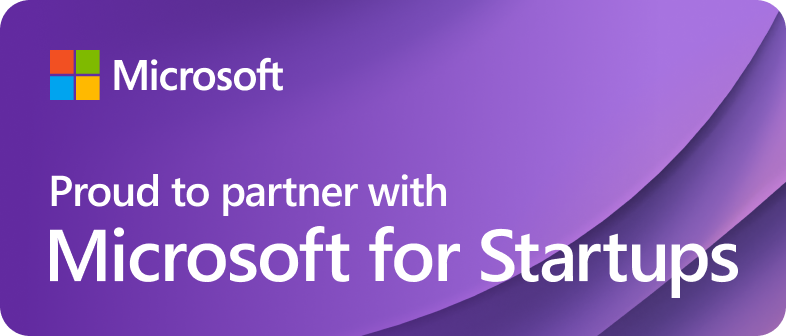The metaverse is the latest buzzword in the world of technology. It gets thrown around a lot, but what is it really? The metaverse (a portmanteau of “metaphysical” and “universe”) is an idea that’s been around for decades. It’s a virtual reality environment with a spatial user interface, built on top of the internet. With augmented reality, we are able to look at our world in new ways. But with virtual reality, we are able to experience our world from different perspectives and interact with it by using our hands.
You might be wondering: who will build this new digital universe? How can I get involved? And what can I do now to prepare? Answering these questions is what this article is all about. Read on to learn more!

What is the metaverse?
The metaverse is a virtual reality environment with a spatial user interface, built on top of the internet. In other words, it’s a 3D space that you can explore and live in through your virtual reality headset, computer or phone.
It was initially coined in Neal Stephenson’s 1992 novel “Snow Crash.” In the novel, the author described it as “a software-generated three-dimensional world that runs on people’s computers while they’re connected to this network”.
The book explores how the metaverse could change our society and what it would be like to live life inside of it — not just for gaming, but for things like work, school, and socializing.
Who will build it?
The metaverse will be a project that is built by many people. In the future, with virtual reality technology and augmented reality, we are able to experience our world from different perspectives and interact with it. But who will build this new digital universe? It’s a question that gets asked often.
SimoneFx Reality Labs is an India-based startup that has also entered the metaverse development with VR technology and NF (Neurofeedback) technology building future tools for VR creators.
How will it change the world?
It’s difficult to say exactly how the metaverse will shape our lives. But there have been many predictions, and we can get a glimpse of what it could be like by looking at the present day.
For example, many people predict that the metaverse will help reduce social barriers. This is because, in a virtual environment, you don’t see or experience things in the same way as you do in your everyday life. For example, someone might be able to see you as an elf or a giant instead of seeing you as physically disabled if they so choose.
This means that people with disabilities may not feel as ostracized from society when they enter this new digital world. As people spend more time in these immersive environments, we may start to see more people with different abilities participating in society more equally.
The metaverse has also been predicted to change the way we think about work and education. Imagine being able to learn anything from anywhere! all without ever leaving your home!
How can you get involved?
Brands should always be in a test-and-learn mode, and the digital landscape, in particular, requires intellectual curiosity. The metaverse is potentially the next iteration of how humans use the internet to connect, communicate and transact — sitting on the sidelines too long is not likely to be an option.
Here’s what brands can do right now:
- Pick your targets.
Think about how much your target audiences/customers are spending time in the metaverse and calibrate your speed of attack appropriately — brands focusing on younger demographics, for example, probably don’t have the luxury of sitting out the metaverse for long. Who are your target demographics, and what behaviours are trending with your current and prospective consumers right now that are indicators of how fast to move into the metaverse?
- Watch the competition.
Start talking about moments when peer companies do things in the metaverse — like a showcase at a leadership meeting just to get the conversation going across the executive team. So much of the space can be intimidating, particularly when seemingly indecipherable concepts, such as NFTs or blockchain, are involved. Can you create a champion for these topics to bring approachable, tangible examples to every meeting?
- Look for applications.
See whether the metaverse gives you opportunities as a company to not only try new things but also to accelerate your purpose or long-term goals like sustainability, which is well suited to many applications of the metaverse. Almost every CMO already has made, or will soon make, a public commitment to sustainability-related ESGs, and they will soon be measurable. What can you pilot in the metaverse that allows you to test more sustainable approaches to serving your customers?
- Plan your entrance.
Ask your agency team to begin formulating a point of view on how your brand should show up in the metaverse and when it might make sense. Holding companies and independent agencies are both keenly watching mass media behaviours and emerging trends, so it’s a great opportunity to ask them what they are seeing across their client portfolio. What tests could they put in place to enable you to get your brand exposed to the metaverse comfortably?
- Keep your balance.
If you are already in it, prepare for the fact that all new spaces present risk and reward; manage accordingly, knowing that it may be super-unpredictable and lacking in standards. The good news is that the recent pandemic made us all way more agile than ever before. To state the epically obvious, there will be experiments that fail. Second Life offered the promise of the metaverse years ago and did not take hold, but the risk for the brands that participated was not significant or long term. So, if this is the right time, it’s important to consider how to be there.
What’s next in this new digital landscape?
The idea of the metaverse is an old one, but now it’s finally coming to life. There are many different companies that are working on this project, including Google, Facebook, and Microsoft. Other big names in tech like Apple and Amazon have also been rumoured to be investing in the project. In a recent interview with Wired magazine, Neal Stephenson, author of Snow Crash and The Diamond Age said: “It’s time for other people to take up the mantle.”
Conclusion
It’s tempting to think of the metaverse as a sci-fi future world where people will be wearing virtual reality goggles and living out their lives on a computer-generated stage. But the metaverse is real now, and it’s happening all around us. The metaverse is a collective virtual space where people and objects can exist. It’s not just a video game or an animated movie — it’s a potential future reality!
Help your business become VR ready. We don’t know exactly what the future will look like, but all signs point to virtual reality becoming more and more popular over time. The sooner you can get on board, the better! Learn more about the metaverse so that you understand what it is and how it will affect your business.
Now that you know what it is, who’s building it, and how you can get involved, you’re ready to explore the new digital landscape.





